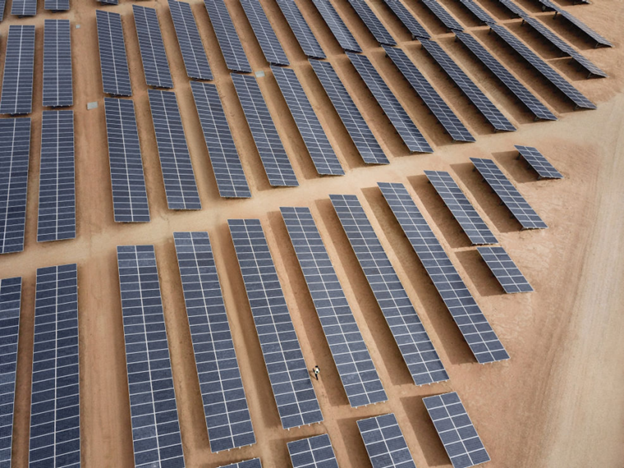This month, Seattle hosted the Asia-Pacific Economic Cooperation (APEC) Senior Officials’ and Ministerial Meetings, and Microsoft was honored to welcome the APEC member energy ministers and their delegations to our campus for a private-sector decarbonization roundtable.
APEC’s member economies play a critical role in advancing Microsoft’s and the world’s clean energy goals. The 21 economies account for more than half the world’s energy demand and over two-thirds’ the world’s electricity generation.
Microsoft has a direct interest in an expanded and clean electric grid with over 60 Azure regions operating now or coming soon, and more than 300 datacenters across the globe. Over half of these regions are in APEC economies. Our cloud services are an asset to governments, corporations, and innovation across the planet and we require reliable electricity to fuel this technological innovation in every country we operate.
During this dialogue, we learned more about the unique opportunities and challenges associated with decarbonizing the electric grid in APEC member economies and regions. It also provided a great opportunity to reflect on our three top priorities in this space: adding more clean energy to the grid; modernizing and expanding electricity transmission; and ensuring a robust clean energy supply chain.
Adding more clean energy to the grid
At Microsoft, our long-term vision is to reach a state where, on all the world’s grids, 100% of our electricity, 100% of the time, is generated from zero-carbon sources. On the path to reaching this vision, our target is to cover 100% of Microsoft’s load with renewable energy purchases by 2025; meaning that we plan to have clean energy contracted for 100 percent of carbon emitting electricity consumed by all our data centers, buildings, and campuses.
Based on our experience, policies that broaden market access for corporate procurement can help accelerate the transition to a reliable and resilient clean electricity grid.
We have prioritized efforts to expand the supply of clean energy generation in the regions where we operate around the world, in order to power our growing operations, local grids, and our supply chain with clean energy. Microsoft has signed agreements for the procurement of over 13.5GW of clean energy in 16 markets around the world including several APEC economies.
We are also using our purchasing power to unlock the clean energy opportunities of the future. Our recent agreement to purchase fusion energy from Helion, a company building the world’s first fusion energy plant, is a great example of this work. This agreement with Helion will advance the market to establish a new, efficient method for bringing more clean energy to the grid, faster.
Modernizing and expanding electricity transmission
One of the biggest barriers to greater availability of clean energy is that energy grids, infrastructure planning and permitting processes are not fit for purpose.
To support the development and deployment of additional clean energy generation, it is essential there is a reliable and resilient transmission grid. As zero-carbon resources are added to the grid at an accelerated pace, the network of wires that will deliver that electricity to homes and businesses must also significantly expand. In almost every country, new transmission lines face planning, resourcing, or permitting obstacles. Simplifying this process and thinking creatively about how to fund new grid infrastructure will help unlock economic opportunity and growth, and improve the resilience of the grid.
An expanded grid should also be a modern grid utilizing digital technologies and artificial intelligence (AI) to identify efficiencies and improve operations. We are excited about the role that AI can play to speed the pace of transition, help effectively integrate new technologies on the grid, and enhance the cybersecurity of critical power-sector infrastructure.
We are starting to see some policy progress in this area. In the United States, the Federal Energy Regulatory Commission (FERC) recently passed a new rule aimed at shortening processes and breaking backlogs. The new federal rule will require grid managers to assess projects in clusters instead of one at a time, with deadlines and penalties for failing to finish interconnection studies on time.
Ensuring a robust clean energy supply chain
Unlocking this clean energy generation and transmission build out will require a robust and diverse clean energy supply chain.
At Microsoft, we are pursuing collaborations in this space that can help develop this supply chain. In January, we announced a strategic alliance with Qcells, owned by Hanwha Solutions headquartered in Seoul. This agreement will enable a strong supply chain for new renewable electricity capacity, and is projected to require at least 2.5 gigawatts of solar panels and related services – equivalent to powering over 400,000 homes.
Access to affordable and reliable electricity is a critical enabler of economic development, social welfare, improved health and other positive societal outcomes. As our world becomes increasingly interconnected, electrified, and technology-driven, the demand for electricity will continue to grow.
Microsoft is committed to helping the world successfully transition to a clean energy future as a first mover, as an investor, as a customer, and as a thought leader. By working together and sharing best practices, we have an opportunity to make this critical transition and mitigate the worst effects of the climate crisis.

